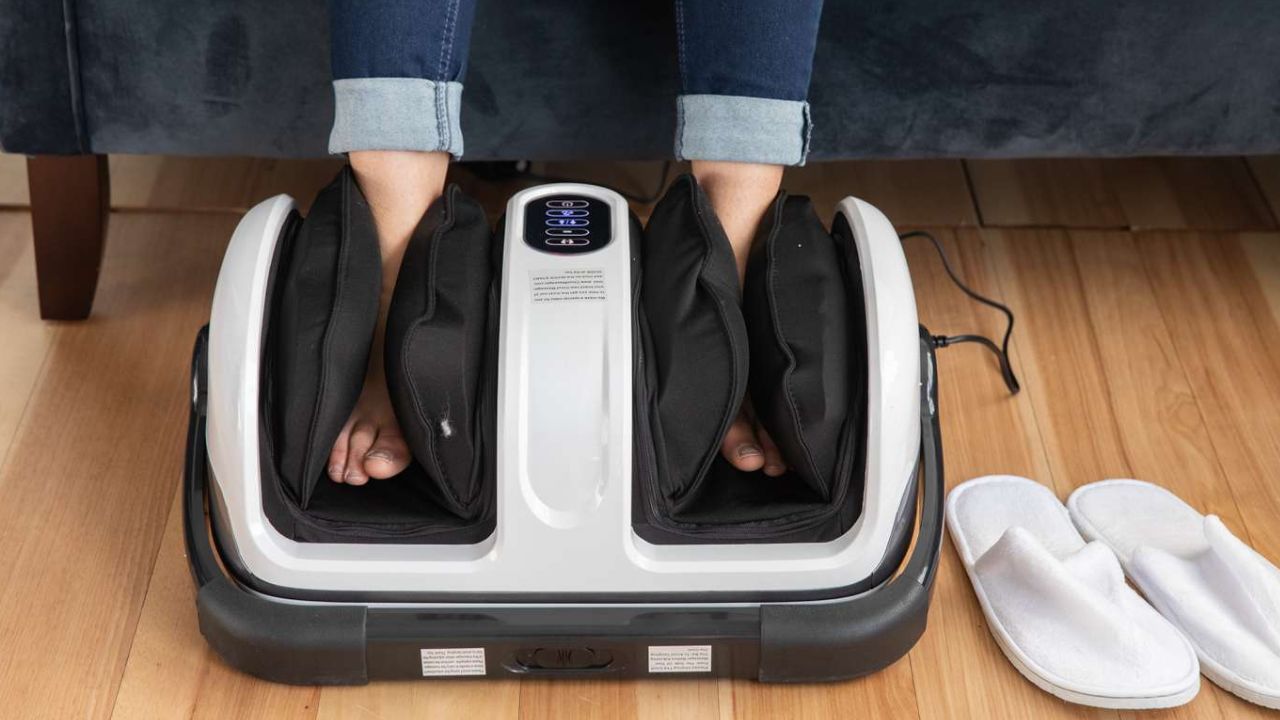Shut your eyes and picture yourself enjoying a fun-filled day that is ruined by a severe, searing pain in your heels. Walking, exercising, and enjoying daily life can all be severely hampered by heel pain? Many look to foot massagers as a possible solution to help them overcome this strain. Step by step, the freedom from heel discomfort is a dance of comfort.
Since each person’s heel pain is different, the best foot massager for heel pain takes this into account by providing a variety of customizing choices. With heat settings, adjustable intensity levels, and a variety of massage patterns, the kneading, rolling, or shiatsu massage techniques relieve tension and calm the affected heel as well as the surrounding muscles, providing effective therapy that is tailored to each individual’s specific heel discomfort.
The massager creates a dance of pain diversion while producing relaxing feelings and stimulating senses. The best foot massager for heel pain serves to deflect our attention from the pain by indulging our senses in a mild and enjoyable experience. This allows for relief and a restored sense of mental well-being. Visit this page here to get the details about heel pain and its major risks.
Most Common Risk Factors and Causes of Heel Pain
Heel pain is a common condition that can significantly impact one’s mobility and quality of life. Several factors contribute to heel pain, ranging from overuse to underlying medical conditions. Understanding the causes and risk factors is essential for prevention, early detection, and appropriate treatment. Here are the most common risk factors and causes of heel pain:
Plantar Fasciitis
Plantar fasciitis is the major reason for heel pain. It occurs due to inflammation of the plantar fascia. Excessive running or jumping can cause inflammation in the fascia, the band of tissue that runs from the base of the toes to the heel bone. You might need to use a heel cushion in your shoes, perform specific exercises, and take medicine to minimize swelling.
Achilles Tendonitis
A large tendon at the back of the ankle that connects the calf muscles to the heel bone. An inflammation of the area where the Achilles tendon goes into the heel bone could be the cause of pain behind your heel. Overuse or sudden increase in physical activity, improper footwear, or tight calf muscles can strain the Achilles tendon, causing pain and stiffness in the heel area.
Heel Spurs
Heel spurs are bony growths that are generated on the lowest of the heel bone. And result from the continuous pulling of the plantar fascia on the heel bone. Heel spurs can cause sharp pain and discomfort, especially when walking or standing for long periods.
Excessive Weight or Obesity
Carrying excess body weight places additional stress on the feet and can lead to heel pain. The increased pressure on the plantar fascia and heel can cause inflammation and strain, contributing to conditions like plantar fasciitis.
Physical Activity and Overuse
Engaging in high-impact sports, running, or activities that involve repetitive pounding on hard surfaces can strain the feet, leading to heel pain. Athletes and individuals who suddenly increase their exercise intensity are at a higher risk of developing heel pain due to overuse injuries.
Concluding Words
Heel pain can stem from various factors, including overuse, improper footwear, foot structure abnormalities, excessive weight, aging, medical conditions, and injuries. Recognizing these risk factors and understanding the underlying causes is crucial for early intervention and appropriate treatment. Individuals experiencing persistent or severe heel pain should seek medical advice to diagnose the underlying condition accurately and implement an effective treatment plan, which may include lifestyle modifications, physical therapy, orthotic instruments, or, in some situations, surgical interference.
